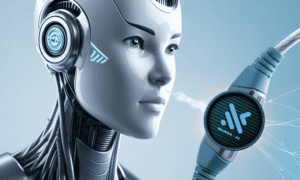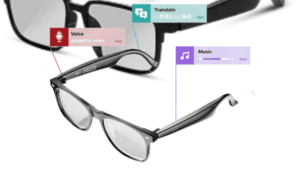Introduction:
In the dynamic realm of technology, artificial intelligence (AI) has emerged as a groundbreaking force, revolutionizing the way we interact with machines. Among the various applications, chatbot development stands out as a pivotal aspect, showcasing the prowess of AI in enhancing user experiences. In this article, we will delve into the essentials of chatbot development, exploring its potential and the impact it can have on businesses and customer engagement.
Understanding Chatbots:
Chatbots, also known as conversational agents, are AI-powered programs designed to simulate human-like interactions in written or spoken language. Their primary purpose is to engage users in meaningful conversations, providing assistance, answering queries, and even executing tasks. Chatbots leverage natural language processing (NLP) to comprehend user inputs, enabling them to respond intelligently and contextually.
The Evolution of Chatbots:
The roots of chatbot development trace back to the 1960s when ELIZA, the first-ever chatbot, was created to mimic human conversation. Over the years, advancements in machine learning and NLP have propelled chatbots into sophisticated tools capable of understanding nuances in language, emotions, and context. Today, businesses across various industries harness the power of chatbots to streamline customer interactions and automate routine tasks.
Benefits of Chatbot Development:
Enhanced Customer Service:
Chatbots serve as virtual assistants, offering real-time support to customers. They can handle a multitude of queries simultaneously, ensuring swift responses and improved customer satisfaction.
24/7 Availability:
Unlike human agents, chatbots don’t require breaks or sleep. This round-the-clock availability ensures that businesses can cater to customer needs at any time, enhancing accessibility and responsiveness.
Cost-Efficiency:
Automating customer interactions through chatbots reduces the need for a large customer support team, leading to significant cost savings for businesses.
Personalization:
Chatbots can analyze user data and tailor interactions based on individual preferences. This level of personalization fosters a more engaging and satisfying user experience.
Data Collection and Analysis:
Chatbots can collect valuable data during interactions, providing businesses with insights into customer behavior, preferences, and pain points. This data can be utilized for strategic decision-making and refining marketing strategies.
Developing a Chatbot:
Step by Step
Define Objectives:
Clearly outline the goals and objectives of your chatbot. Whether it’s to provide customer support, gather information, or facilitate transactions, a well-defined purpose is essential.
Choose a Platform:
Select a platform for your chatbot deployment. Popular choices include website-based chatbots, messaging apps, and social media platforms. Choose a platform that aligns with your target audience and business objectives.
Select a Development Framework:
Various chatbot development frameworks, such as Dialogflow, Microsoft Bot Framework, and Rasa, offer different features and functionalities. Choose a framework that suits your technical requirements and expertise.
Design Conversational Flow:
Plan the conversational flow of your chatbot. Define how it will greet users, handle queries, and provide information. Ensure a natural and user-friendly interaction that aligns with your brand voice.
Integrate NLP:
Incorporate natural language processing capabilities into your chatbot to enhance its ability to understand and respond to user inputs accurately.
Test and Refine:
Thoroughly test your chatbot to identify and rectify any issues. Gather feedback from users and continuously refine the chatbot’s performance based on real-world interactions.
Deploy and Monitor:
Once satisfied with the testing phase, deploy your chatbot to the chosen platform. Regularly monitor its performance, gather analytics, and make adjustments as needed to improve user satisfaction.
Conclusion:
As we navigate the ever-evolving landscape of technology, chatbot development emerges as a transformative force, bridging the gap between businesses and their customers. The potential of artificial intelligence unfolds through these intelligent conversational agents, offering enhanced customer service, 24/7 availability, cost-efficiency, and invaluable data insights. By understanding the step-by-step process of developing a chatbot, businesses can unlock the full potential of this AI-driven tool, fostering a seamless and engaging user experience. Embrace the power of chatbot development, and embark on a journey to revolutionize customer interactions in the digital age.



































